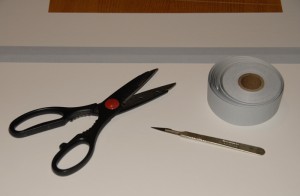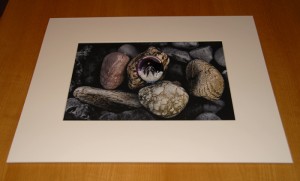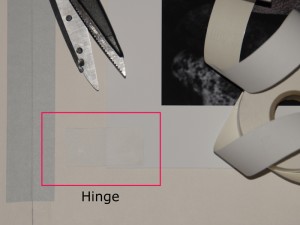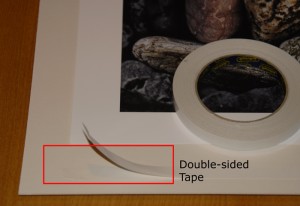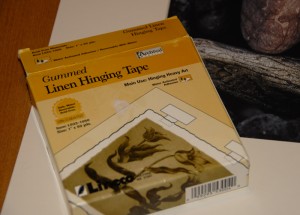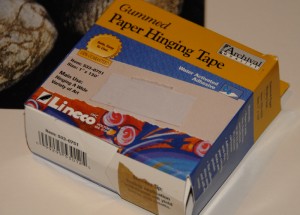How to mount photographs
Members usually mount photographs that are entered for competitions or exhibitions. The most common size for mounts is 40 x 50cms, although for internal competitions this is generally the maximum size that is accepted. For exhibitions, note that the club picture frames only accept mounted prints of this size.
Mounts may be of any colour, but members are advised that highly coloured or dark mounts are not in vogue with many competition judges just now. A light colour is therefore advised.
St Andrews Photographic Society has a mount-cutter, which may be borrowed by members and used to cut bevelled apertures in their mounts. It is kept in the back room and may be “signed out” for a week on club nights.
Mount board and backing card are available from David Ogden. This is pre-cut to 40 x 50 cms size, leaving you to cut the aperture..The mountboard is of a light (near white) colour and is of archival quality. Members can contact David to order mount board or backing board by completing the simple form at the bottom of this page. Alternatively, if you do not want to cut the apertures yourself, there are a number of companies such as Cotswold Mounts that will cut mountboard for you.
1. ASSEMBLE YOUR MOUNT
You need to have a ready-cut mount and backing board before you start. The mount should be either a standard 40 x 50 cms for exhibition or have alternative dimensions of your choice. The norm is to allow roughly 7 cms around the aperture. Mounts often have an additional centimetre left underneath the aperture, so that the photograph is set a little higher than the centre of the frame. The aperture should be a couple of millimetres smaller than your photograph in both dimensions.
You can use the club’s mount cutter to cut your own mount, or you can buy ready-cut mounts and backing boards (see the Cotswold Mounts web site for one source). If you buy ready-cut mounts, then the aperture is usually placed centrally.
2. HINGE THE TWO PARTS TOGETHER
Once you have assembled your mount and backing board, you will need some tape to hinge the two pieces together. It is best to use a strong tape rather than cellotape or masking tape (which in time may become unstuck or discolour the mount). You can buy special archival-quality linen tape for hinging mounts if you want the finished product to last for a very long time without discolouration.
2. PUT YOUR PHOTOGRAPH IN PLACE
Arrange your photograph on the backing board and then close the mount to see how it will look. Be careful to get your photograph straight and don’t leave any white space around it. Being careful not to damage the surface, add a paperweight or another heavy object, so that the photograph doesn’t move easily in the next stage.
3. FIX YOUR PHOTOGRAPH WITH HINGES
Carefully open your mount again so that you do not move your photograph. Then use two pieces of adhesive tape to hinge your photograph by the top corners to the backing board. It may seem strange to just use two fixing points, but photographic paper and backing board often expand and contract at different rates with changes in temperature and humidity. This method allows both to expand without unsightly buckling.
Again it is best not to use masking tape because this comes unstuck in time. Instead it is best to use special “acid-free” hinging tape that will not harm your photograph in the long-term.
If you have left a space around your image on your photographic paper, then the hinge can be quite simple. If the photograph is printed “edge-to-edge” then stick vertical pieces of tape to the back of your photograph, and then when you turn it over, use horizontal pieces of tape to form a “T” shapes to hang the photograph onto the backing board.
4. FINAL STEPS
Your photograph is now ready for framing.
However if you want to enter it for competitions then you may prefer that the mounted print is not able to flap open when a judge looks at it. A simple solution is to use a short strip of double-sided adhesive tape to hold the mount closed. This may be placed inside the mount just below the photograph.
Using double-sided adhesive tape is not recommended for long-term mounting because the adhesives may discolour your mount board.
If you want to sell your photographs or give them further protection against scratches during handling, then special cellophane envelopes are available in different sizes, including ones to fit 40 x 50 cm mounts.You can obtain these from Cotswold Mounts, Great Art, or Silverprint.
5. ADHESIVE TAPES
Specialised mounting tapes are available from Silverprint.
Alternatively, if you do use masking tape for photographs where the long-term archival preservation is unimportant, look for the type that is known as “1-day release” tape because this has a stronger adhesive than the “3-day release” variety.
